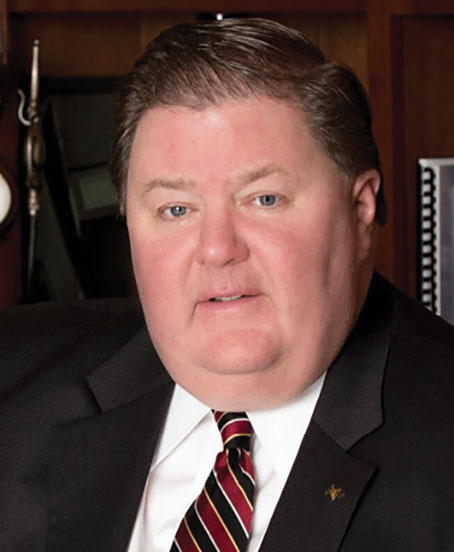Suite Talk: Robert J. McCormick, chairman, president and CEO of Trustco Bank
With the economy behaving like an oscilloscope for the past few months, it is understandable if one becomes a bit panicky over the state of one”™s financial health. And this leads to the question: do you have the right financial adviser in place to help steer you through the fiscal shoals of uncertain times?
 In this edition of Suite Talk, Business Journal Senior Enterprise Editor Phil Hall speaks with Robert J. McCormick, chairman, president and CEO of Trustco Bank. The Glenville-based financial institution has New York branches throughout Westchester and the capital region, as well as locations in New Jersey, Vermont and Florida.
In this edition of Suite Talk, Business Journal Senior Enterprise Editor Phil Hall speaks with Robert J. McCormick, chairman, president and CEO of Trustco Bank. The Glenville-based financial institution has New York branches throughout Westchester and the capital region, as well as locations in New Jersey, Vermont and Florida.
There is an old saying warning against changing horses in midstream. Why would a person want to switch financial advisers during a period of economic uncertainty?
“Acting on emotion is one of the biggest detriments to an investment portfolio. When faced with a period of economic uncertainty and market volatility, investors may react emotionally and feel a deep need to switch their financial adviser. This may create a false sense of security to an investor, feeling as though they have control in a time where many feel helpless.
“The most prudent move an investor could make during times like these is to stay the course and trust their current adviser, as they would during normal circumstances.”
What questions should a person be asking their financial adviser in regards to a recessionary economy?
“Questions you may want to ask your financial adviser in regards to a recessionary economy include:
Ӣ Is this a buying opportunity?
Ӣ Is my current asset allocation still prudent to meet my long-term goals, despite the current market environment?
Ӣ Should I reassess my risk tolerance?
Ӣ What is the outlook for the economy and the markets?
”¢ Is my cash flow going to be adversely affected by low interest rates?”
What are the advantages of having a financial adviser that is part of a banking institution, as opposed to being an independent adviser?
“There is a level of trust established during a banking relationship that can only be strengthened by working with a financial adviser that is an arm of the bank. Another advantage is that it enables consumers to keep things simple and consolidated.
“As technology continues to advance and new products and services are constantly thrown at consumers through various mediums, it is difficult to know who to trust. At Trustco Bank, it is of our utmost importance that you can trust that all of your banking and investment needs will be met.”
In your professional opinion, what is the ideal fee structure for a financial adviser?
“The ideal fee structure for a financial adviser is a set management fee in the form of a predetermined percentage of the overall portfolio. Our financial services department charges a flat management fee, which is taken quarterly based on the market value of the portfolio at the end of each quarter. As an individual”™s portfolio value rises, the management fee will increase accordingly, and conversely, should the portfolio value drop, the fee collected will decrease as well.
“A fee structure such as this provides clarity and transparency within a relationship between adviser and client, further motivating the adviser to do all they can to increase the portfolio value.”
What do you see as the state of the U.S. economy over the next 12 months?
“Short of having a crystal ball, we are optimistic about the U.S. economy over the next 12 months. It is important to remember that prior to the economic downturn we are currently faced with, underlying economic fundamentals were at their strongest. Unemployment across the board was at record lows of 3.5%, consumer sentiment peaked at a decade high, the U.S. saw solid growth quarter after quarter, and the most tracked equity indices including the S&P 500, Dow Jones and Nasdaq hit their respective all-time highs in February of this year.
“Equity indices have already greatly improved from the lows seen in March, as the S&P 500 Index has returned a positive 10.26% from May 28, 2019, through May 28, 2020. We believe the pace at which the economy opens and remains open, will determine the length of the U.S. economic recovery.”